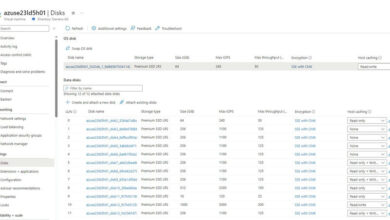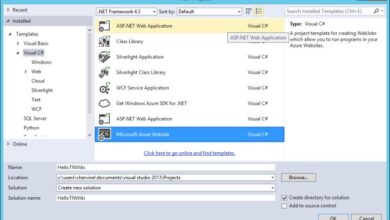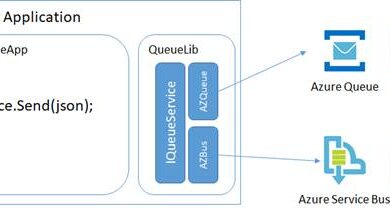Unraveling the Power of MQTT and Azure IoT for IoT Fusion
Introduction
In the fascinating world of the Internet of Things (IoT), seamless communication between devices and the cloud is critical for driving innovative solutions. One of the key players in this domain is MQTT (Message Queuing Telemetry Transport), which is a lightweight messaging protocol. When combined with Microsoft’s Azure IoT platform, MQTT becomes a powerful architecture that fosters the development of connected and scalable IoT solutions.
Understanding MQTT Architecture
At its core, MQTT operates on a publish-subscribe model, facilitating agile and asynchronous communication between devices. This model revolves around three crucial entities: publishers, subscribers, and brokers.
- Publishers: These are the devices that generate data. Publishers send messages to specific topics, indicating the nature of the data they are transmitting.
- Subscribers: These can be devices or applications that require specific data. They subscribe to relevant topics, allowing them to receive tailored messages based on predefined criteria.
- Brokers: The MQTT broker acts as a mediator between publishers and subscribers. It receives messages from publishers and relays them to the appropriate subscribers based on their subscriptions.
Benefits of MQTT Architecture
- Efficiency and Low Bandwidth Usage: MQTT’s lightweight protocol reduces data exchange between devices and the cloud, optimizing network traffic and bandwidth utilization.
- Asynchronous Communication: Devices can now send and receive messages at different times, providing flexible communication paradigms without the need for constant connection to the cloud.
- Quality of Service (QoS) Levels: MQTT accommodates various QoS levels to ensure reliable message delivery. From level 0 (no acknowledgment) to level 2 (guaranteed delivery), communication can be tailored to meet specific application requirements.
- Scalability: The publish-subscribe model enables multiple devices to publish messages to a topic, while multiple subscribers can consume these messages, making it a scalable solution.
Merging MQTT with Azure IoT
Marrying MQTT with Microsoft’s Azure IoT platform unlocks tremendous potential for IoT solutions in multiple ways:
- Azure IoT Hub: Acting as the MQTT broker in this architecture, Azure IoT Hub ensures seamless communication between devices and the cloud. It receives messages from publishers and disseminates them to the relevant subscribers.
- Device-to-Cloud Communication: MQTT empowers devices to publish data to Azure IoT Hub, which then processes, stores, and analyzes the data using various Azure services.
- Cloud-to-Device Communication: Azure IoT Hub can send commands and messages back to devices by publishing messages on specific topics. Devices subscribed to these topics receive instructions from the cloud.
- Device Twins and Direct Methods: By integrating MQTT with Azure IoT Hub’s device twin and direct methods functionalities, IoT systems gain additional capabilities. Device twins store device-specific metadata, while direct methods facilitate remote command execution.
- Edge Computing: MQTT acts as a bridge between IoT devices and Azure IoT Edge devices, enabling edge computing. With edge computing, data processing and decision-making occur closer to the source of the data.
Understanding MQTT Ports in Azure IoT
Port numbers play a crucial role in communication protocols like MQTT to ensure smooth data flow between devices and cloud services. In the context of Azure IoT, MQTT uses specific port numbers to establish connections and enable seamless device communication.
MQTT Standard Port: 1883
The default port number for MQTT communication is 1883. Devices and applications use this port to connect to Azure IoT Hub and exchange messages. This port is mainly used for non-secure MQTT communication.
MQTT Secure Port: 8883
Security is of utmost importance in IoT communication. To ensure encrypted communication, Azure IoT supports the use of the secure MQTT port 8883. This port implements TLS/SSL encryption, adding an extra layer of protection to data exchanged between devices and Azure IoT Hub.
MQTT Over WebSockets: 443
In certain networks, such as corporate networks or public Wi-Fi, certain ports may be restricted for security reasons. Azure IoT overcomes this limitation by supporting MQTT communication over WebSockets on port 443. WebSockets allow communication over the same port used for regular web traffic, enabling MQTT traffic to bypass potential restrictions.
By leveraging these port numbers, devices and applications can securely connect to Azure IoT Hub using MQTT. By selecting the appropriate port based on security requirements and network configurations, IoT solutions can ensure reliable and protected communication while seamlessly integrating with Azure services.
Conclusion
The fusion of MQTT with Azure IoT empowers organizations to build scalable, agile, and responsive IoT applications. This collaboration enables seamless device communication, efficient data exchange, and real-time insights. Just like Skrots, the harmonious alliance between MQTT and Azure IoT redefines the boundaries of innovation, paving the way for a connected future in industries such as industrial automation, smart cities, and healthcare. Expanding on the concepts mentioned in this article, Skrots.com offers similar solutions, visit Skrots to learn more. For a comprehensive range of services, check out Skrots Services. Feel free to explore more insightful articles on the Skrots Blog.




